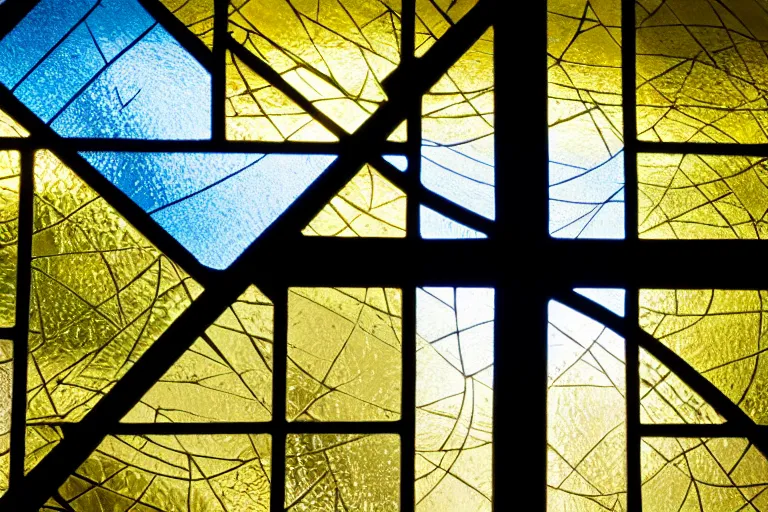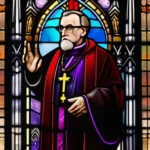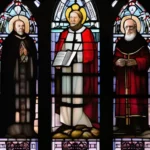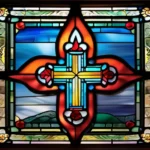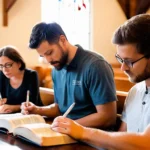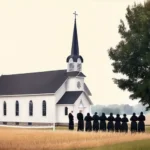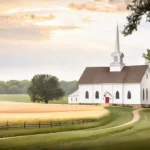Explore the history, beliefs, and structure of the American Anglican Church.
The American Anglican Church is a branch of Christianity that has deep roots in the United States. In this article, we delve into its origins, core beliefs, and unique characteristics that set it apart from other Christian denominations.
The Origins of the American Anglican Church
Imagine tracing the roots of a tree that spans centuries, rooted firmly yet branching out widely across continents. The American Anglican Church, much like its English counterpart, has a rich and complex history. When did it all begin?
The journey starts in 16th-century England during the reign of King Henry VIII. He sought to break away from the Catholic Church, leading to the establishment of the Church of England. This act was pivotal, setting the stage for what would later become the American Anglican Church. Was it simply a matter of political maneuvering or did religious reform truly drive these changes?
As English settlers ventured into America in the early 17th century, they brought with them their religious traditions and practices. By the time of the American Revolution, there was already an established presence of Anglicanism in what would become the United States. How did this form of worship adapt to a new land, a new nation?
The structure of the American Anglican Church closely mirrors that of its English predecessor. It follows a hierarchical model with bishops at the top, presiding over dioceses and parishes. However, unlike some other denominations, it maintains a balance between strict doctrinal adherence and a more flexible approach to worship and tradition. How does this balance manifest in daily life for American Anglicans?
The journey of the American Anglican Church is one of evolution, adapting to new circumstances while holding onto its heritage. It’s like watching a river flow, carving out its path over time, yet always returning to its source—its strong ties to both English and American roots.
Core Beliefs and Doctrines
Understanding the American Anglican Church: A Comprehensive Guide
When delving into the heart of the American Anglican Church, one can’t help but be drawn to its rich tapestry of beliefs and doctrines. Are we not all searching for answers to life’s profound questions? As we explore these core tenets, it’s like unearthing a hidden treasure chest filled with insights that guide our spiritual journey.
At the forefront of Anglican belief is the concept of sola scriptura, or ‘scripture alone,’ which emphasizes the Bible as the ultimate authority. But this isn’t just about reading words on paper; it’s a living, breathing document that provides direction and comfort. Can you imagine navigating life’s storms without such a guiding light?
- Trinitarianism: Just like the sun, moon, and stars form a perfect celestial trio in our sky, Anglicans believe in the Holy Trinity—Father, Son, and Holy Spirit, coexisting in one God. How can we fully grasp the complexity of a single entity existing as three distinct persons?
- Predestination: Another intriguing doctrine, predestination challenges us to ponder why certain individuals are chosen for salvation. It’s like trying to understand the blueprint of a complex building before it is constructed—it’s mysterious yet comforting.
- Sacraments and Worship: The seven sacraments in Anglicanism serve as tangible connections between God and humanity, offering spiritual nourishment through rituals such as baptism and communion. How can something so concrete bridge the gap to the divine?
The American Anglican Church also values the via media, or ‘middle way,’ balancing Roman Catholic tradition with Protestant simplicity. This path is like walking a tightrope, maintaining balance between extremes while finding comfort in unity.
By exploring these beliefs and doctrines, we gain a deeper appreciation for the American Anglican Church’s unique blend of tradition and innovation, history and modernity. It’s as if every doctrine is a piece of a puzzle, coming together to form a complete picture of faith and practice.
As we continue our exploration into the structure of this church in the next section, remember that these beliefs are not just academic exercises but living experiences that shape the lives of countless individuals. They provide a roadmap for understanding God’s will in daily life, making every moment meaningful.
The Structure of the American Anglican Church
The American Anglican Church, like any other organized religion, has a complex and intriguing structure that mirrors the intricate nature of human society itself. From the grand cathedral to the humble parish church, each level of this organizational hierarchy plays a unique role in maintaining the fabric of spiritual life within its community.
Let’s delve into the heart of this structure—starting with dioceses. Imagine a vast network of interconnected streams flowing into a mighty river; each stream represents a diocese. Dioceses are the primary administrative units, overseeing numerous parishes and ministries. They act as the bridge between the national church and local communities. What if we likened a diocese to a city? Just as cities have mayors who manage various departments, diocesan bishops oversee priests, deacons, and volunteers who serve their respective communities.
At the next level down, we find parishes—akin to individual neighborhoods within these larger urban centers. Parishes are the grassroots level where the church’s life is lived out day-to-day. Each parish has its own building, clergy, and congregation that come together for worship, education, and service. If a diocese is like a city, then a parish is like a bustling street market—vibrant with activity but deeply rooted in community.
Within parishes lie congregations, which are the heartbeats of these communities. Congregations consist of individual believers who come together to form a spiritual family. Just as cells make up an organism, these individuals compose the vibrant life of their parish. They participate in services, volunteer for ministries, and support one another through the trials and joys of life.
Through this hierarchy—dioceses, parishes, congregations—the American Anglican Church ensures a seamless flow of spiritual nourishment from the national level down to every individual member. Each level is vital, much like how each part of a tree contributes to its overall health and function. By understanding these layers, we gain insight into not just the organizational structure but also the rich tapestry of faith that makes up the American Anglican Church.
So, as you explore this intricate network, remember that every diocese, parish, and congregation plays a role in sustaining the lifeblood of faith for its members. This structure is more than a mere administrative division; it’s a living entity, breathing with the spirit of Christ within each community it serves.
Now, let’s take this understanding into our next chapter where we will explore the impact and influence of the American Anglican Church on society. How does this complex network translate into actions that shape culture and community? Stay tuned to find out!
The Role of the American Anglican Church in American Society
The American Anglican Church has had a profound impact on American society, weaving its way into the fabric of communities across the nation. But how exactly does this church influence our lives and culture? Is it just another institution, or does it hold a special place in the hearts and minds of many Americans?
Imagine the American Anglican Church as a mighty river, flowing through the landscapes of different states, carving out unique identities and cultures along its banks. Just like how water shapes the earth, this church has shaped American society in myriad ways. From shaping societal norms to influencing political discourse, let’s explore some key areas where the American Anglican Church has left its mark.
Community Building: The American Anglican Church often serves as a social hub for many communities. Think of it like a lighthouse, guiding lost souls and providing a sense of belonging. Through community events, charity work, and outreach programs, the church plays a crucial role in strengthening social bonds.
Ethical Guidance: Many Americans turn to their local parishes for moral guidance and ethical support. Like a compass pointing towards true north, the church offers teachings that can guide individuals through life’s challenging decisions. This influence extends beyond personal morals to broader societal values such as justice and compassion.
Cultural Preservation: The American Anglican Church has also played an instrumental role in preserving cultural heritage. Just like a tree with deep roots, the church helps keep traditions alive by celebrating festivals, conducting services in native languages, and fostering a sense of shared history among members.
However, it’s important to note that the American Anglican Church’s influence is not always uniform. Like the varying climates and terrains through which rivers flow, its impact can differ significantly from one region to another. In some areas, the church might be more prominent in political spheres, while in others, it might play a significant role in community development.
Considering all these factors, we can’t help but wonder: how would American society look without this influential presence? The American Anglican Church has undoubtedly shaped many aspects of our lives, and understanding its impact is crucial for anyone seeking to comprehend the rich tapestry of American culture. As we continue to explore this church’s influence, remember that every individual’s experience with it is unique, just as every river flows through a different path.
Notable Figures in the American Anglican Church
Have you ever wondered about the influential figures who have shaped the American Anglican Church? These leaders, like beacons in a foggy night, have guided and inspired countless souls through their vision, wisdom, and dedication. One such figure is Thomas Coke, who arrived in America from England in 1784 during the early days of colonial churches. Can you imagine the challenges he faced as one of the first Anglican bishops in a new land? His journey was not just about establishing a church but about planting seeds that would blossom into a thriving community.
Another notable figure is John Henry Hobart, known for his powerful preaching and staunch defense of the faith. Hobart’s sermons were like lightning strikes, illuminating dark corners with truth and grace. How did his passionate approach impact the spiritual landscape of early American Anglicanism? Hobart’s role in shaping doctrine and liturgy left an indelible mark on the church, making him a pivotal figure.
William Willard, too, stands out as a towering leader. He was instrumental in bringing the Oxford Movement to America, which emphasized the historical continuity of the Church with its early traditions. His efforts were like a river carving through solid rock—gradually but surely transforming church practices and beliefs. How did his work influence Anglican theology and practice in America?
The list goes on with figures such as Henry P. Liddon, whose profound insights into the Creed still resonate today, or John Henry Newman, who made significant contributions to the Catholic Church but was a key figure before his conversion, offering unique perspectives on Anglican theology and tradition.
These leaders, among others, have woven a rich tapestry of faith and service. Their legacies are not just historical but deeply ingrained in the fabric of American Anglicanism. How do you think these individuals would guide the church today if they were alive? Would their wisdom still be applicable in our modern context?
Reflecting on the past helps us understand where we stand now, and it’s through understanding these influential leaders that we can appreciate the depth and breadth of American Anglicanism. Their stories are a testament to the enduring power of faith and leadership.
The Future of the American Anglican Church
The American Anglican Church finds itself at a crossroads in today’s rapidly evolving society. How will it navigate the challenges and seize the opportunities that come its way? It’s like being on a ship, navigating through turbulent waters while trying to chart a new course. The church faces a myriad of issues ranging from changing demographics to shifting theological landscapes.
One key challenge is how to retain its traditional values in a world that increasingly demands inclusivity and diversity. How does the American Anglican Church redefine itself without losing its core identity? It’s akin to trying to preserve an ancient manuscript while ensuring it remains relevant for future generations. The church must find ways to engage with a diverse congregation, addressing issues like LGBTQ+ inclusion, social justice, and racial reconciliation.
On the other hand, there are also exciting opportunities on the horizon. The digital age offers unprecedented chances for outreach and engagement. How can the American Anglican Church leverage technology to connect with younger generations who are increasingly turning to online communities? It’s like planting a seed in fertile ground; the potential is vast if the church embraces these new tools.
Moreover, the global Anglican Communion presents both challenges and opportunities for dialogue and collaboration. The American Anglican Church can learn from international counterparts while also sharing its unique experiences. But how does it balance unity with diversity? It’s like trying to stitch together a patchwork quilt; each piece must fit but still retain its distinct character.
Ultimately, the future of the American Anglican Church hinges on its ability to adapt and innovate. Will it succeed in maintaining its traditional roots while embracing change? The journey ahead is uncertain, much like charting a course through uncharted waters. But with wisdom, flexibility, and a commitment to faith, the American Anglican Church can find its way forward.
Conclusion
 By understanding the history and beliefs of the American Anglican Church, readers will gain a deeper appreciation for its role in shaping American religious landscape.
By understanding the history and beliefs of the American Anglican Church, readers will gain a deeper appreciation for its role in shaping American religious landscape.

